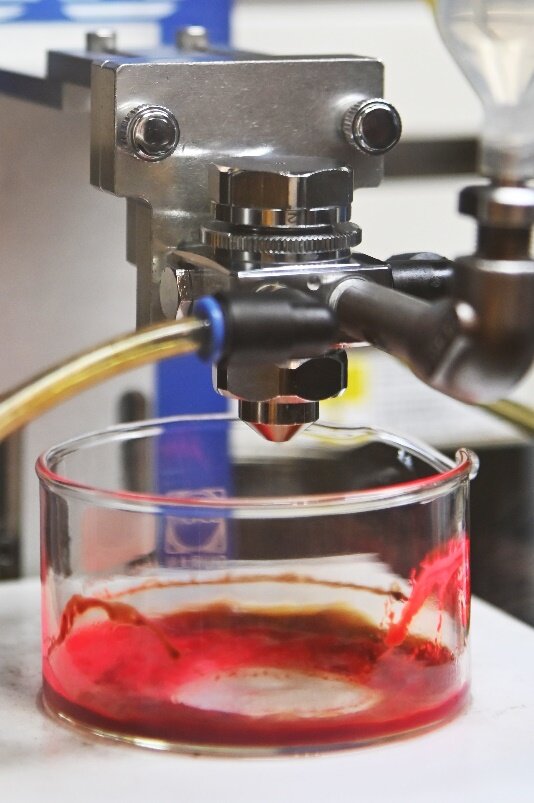A new approach to synthesizing quantum dots has significantly increased their use value, according to members of an international research collaboration. The method, called spray-synthesis, was developed jointly by professor Hao-Wu Lin and associate professor Chih-Sung Chuu of National Tsing Hua University (Taiwan) and professor Richard Schaller of Northwestern University.
Perovskite quantum dots have been pursued for their potential as quantum emitters, though instability has hindered their development. Unlike other quantum emitters, perovskite quantum dots are able to realize single-photon emission at room temperature and possess advantageous properties such as high quantum yield and high color purity, Lin said. However, with current methods to create them, they are only able to survive under excitation for a few minutes.

Rather than injecting precursor solution into solvent to form quantum dots, the proposed method sprays microdroplets of the solution into the solvent to create higher-quality quantum dots. Courtesy of National Tsing Hua University.
“We find that just like organic semiconductors, people always criticize the stability of halide perovskite quantum dots,” Lin told Photonics Media. “But with great efforts of engineering and deeper knowledge of the materials, we demonstrate that, in fact, halide perovskite quantum dots are intrinsically stable and even with a self-healing property. Hence, we are excited that this work could be one of the first steps to pushing halide perovskite quantum dots toward practical applications.”
Traditionally, perovskite quantum dots are prepared by directly injecting and mixing two solutions, which then creates the nanocrystals known as quantum dots. Lin’s research team refined this process: Rather than injecting one solution into the other, the spray-synthesis method greatly increases the contact area by spraying microdroplets into the solution, allowing a uniform protective organic layer to form on the surface of the quantum dots. This allows them to retain their brightness even after 24 hours of intensive continuous excitation.
The quantum dots showed exceptional brightness and broke the previous record for single-photon brightness, reported in 2017 and held by hexagonal boron nitride (hBN), the researchers reported. That 2D material achieved a brightness of 7 million photons per second. The quantum dots Lin’s team developed were able to achieve 9 million photons per second.
“Moreover, due to a much higher absorption cross-section of perovskite quantum dots, compared with an hBN single-photon emitter, we need only 1% of the excitation intensity to excite 9 million photons per second from a single perovskite quantum dot,” Lin told Photonics Media.
To put that into perspective, once the quantum dots are put into a display — a task they are well suited for due to their high stability and high photoluminescent quantum yield — and efficient miroLEDs are properly integrated as an excitation source, Lin’s researchers believe they can easily achieve a brightness of several thousand nits. For comparison, a typical smartphone display is a little less than 700 nits.
The dots also showed an ability to self-heal, which has been observed in the bulk thin-film halide perovskite solar cells, Lin said.
“In the report, this is the first time people observed this intriguing property of halide perovskite in the single-dot level,” he said.
The team predicts that the improved quantum dots will have applications as a single-photon emitter for quantum communications, and, potentially, in quantum computing. Also, an ensemble of quantum dots could be used in next-generation displays.
The research was published in ACS Nano (www.doi.org/10.1021/acsnano.1c00733).